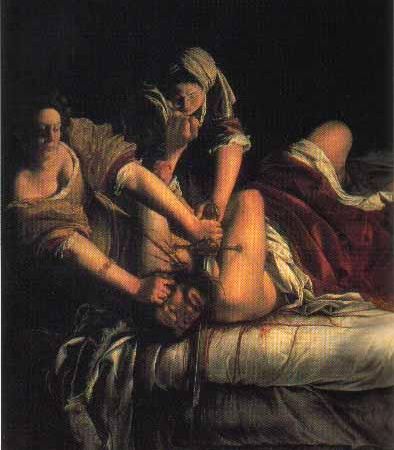Place of birth: {on}, {tn}
Artemisia Gentileschi was born in Rome. She worked in a style influenced by Caravaggio, but which was nonetheless strongly individual, and today she is regarded as one of the most accomplished of the so called Caravaggisti. Though rather marginalized in earlier art historical accounts of her period, Artemisia has been reassessed in recent years, particularly by feminist art historians, who have discerned a specifically female point of view in her work. Her treatment of "Susanna and the Elders," for example, concentrates on the vulnerability of a naked woman whose private bath has been violated by the predatory elders; male painters generally appear to give emphasis to the sensuality of Susanna's nudity, such that the (presumably male) viewer of the painting becomes in effect a third voyeur. Artemisia's "Judith Beheading Holofernes" is notable for its extreme violence and has been linked to the trauma of her alleged rape in 1612 at the age of 19 by her painting instructor, Agostino Tassi. Her father sued Tassi for the crime, but in the ensuing legal proceedings Artemisia was tortured and Tassi was ultimately acquitted. The violence of these particular paintings is thus sometimes seen as a kind of therapeutic revenge substitute.


































